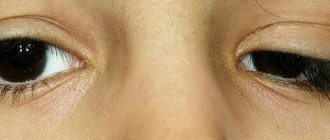Common causes of development
The appearance of persistent, unsubstantiated fear of a certain object or phenomenon is due to the following reasons:
- Childhood trauma. Events affecting the psyche in a child’s life are forgotten over time, but are deposited in the subconscious. Fear experienced a long time ago makes itself felt to an adult.
- Heredity. Fear of something can be transmitted at the genetic level from ancestors.
- Bad experience. A negative, unexpected result of an action.
- Depression, stress, exhausting the body.
- Imposed fear as a contagious phenomenon. It is transmitted from parents, whose behavior is observed by their child for a long time. This also includes the negative influence of the media, cinema, surrounding people, etc.
- Brain injuries.
- Long-term depression.
- Chronic diseases.
- Character traits.
It should be noted that the development of any phobia depends on several factors, and for each individual case they are different.
What is mysophobe afraid of?
Mysophobia is a common type of psychological disorder. People who suffer from dirt and germ phobia worry that they will contract some kind of disease. Fear of bacteria manifests itself in children and adults. It is formed under the influence of various traumatic factors against the background of an unstable psyche. Most often in childhood. Dirt phobia can appear many years after the situation that triggered it. And this makes it difficult for psychologists to identify the causes. A person may not remember what caused the fear. And without identifying the cause, it is difficult to completely eliminate the disorder.
Symptoms of mysophobia
What distinguishes mysophobia from other people: the general picture of the disorder:
- Frequent hand washing is the first sign.
- Wiping everything around with disinfectants.
- Spraying the air with disinfectants on a regular basis unnecessarily.
- Mysophobes are those people who wear masks during flu season, trying to protect themselves.
- They avoid contact: they try not to shake hands, not touch door handles in public places, or handrails in transport.
- If a mysophobe has contact with a sick person, panic attacks begin.
- A person will not calm down until he cleans everything around, washes things, and disinfects everything.
- Fears are so strong that they push you to take clearly unnecessary actions: washing your hands multiple times, treating your sinuses, washing even clean clothes.
These and similar symptoms confirm the presence of a phobia of fear of germs and dirt. There are also a number of physiological symptoms that are necessarily present in mysophobes. They appear when mysophobe has been in contact with dirt, sick people, dust:
- panic fear;
- increased heart rate;
- facial skin redness or pallor;
- tingling of the limbs;
- coldness in hands and feet;
- sweating of the feet and palms;
- trembling in the body or individual parts: hands, lips;
- feeling of a lump in the throat;
- headache;
- dizziness;
- pre-syncope, fainting in severe cases;
- feeling of lack of air;
- strong persistent fear, confidence in the onset of a serious illness;
- thoughts about death;
- Many patients note that they feel like crying during a panic attack.
This condition indicates the presence of a phobia. A panic attack is a characteristic symptom of any phobia. And all of the above symptoms can appear together or selectively. It depends on the individual reaction of the body.
Severe cases of mysophobia
In severe forms of fear of germs and dirt, a person is in constant tension: he expects danger from everywhere. Isolation sets in. The person isolates himself from any contact and prohibits entering his room without first washing his hands. Some require you to wear a mask, while others prefer to communicate without contact. Over time, this leads to complete isolation.
Symptoms of phobias
Such disorders manifest themselves differently in everyone, depending on the individual characteristics of the person, his personality, emotional and physical state. This could be mild anxiety, a panic attack, bodily pain, etc.
The emotional sphere reacts like this:
- sudden fear develops into panic;
- the sense of reality is lost;
- there is a fear of dying;
- loss of control over the situation and oneself;
- powerlessness, inability to do something;
- the desire to escape from the source of irritation as quickly as possible.
Physiological manifestations:
- it’s hard to breathe, there’s not enough air;
- feels dizzy or has a headache;
- chills;
- dry mouth and throat;
- tremor of the limbs, their icing;
- tachycardia, arrhythmia;
- temperature increase;
- chest pain;
- nausea turning into vomiting;
- heavy sweating;
- stomach spasm;
- increase or decrease in blood pressure;
- pallor or redness of the skin.
The psyche, in turn, reacts to the subject of a phobia with unmotivated, inexplicable horror, which a person is unable to appease. Anxiety seems to paralyze the will, preventing you from doing something, calming down, concentrating and starting to think soberly. This state is completely unsettling, causing hysteria and tears.
Obsessive thoughts about the subject of fear cause tension that poisons life, interferes with the normal existence of the individual, does not give him the opportunity to visit certain places, communicate and work normally, and depletes his physical and spiritual strength. At the same time, in fact, nothing and no one threatens him.
Added to this is the following. A person subject to unmotivated fear worries and feels a sense of awkwardness that others will notice his condition, weakness and judge him. As a result, a person withdraws into himself and isolates himself.
If you take the presence of irrational fear lightly, believing that there is nothing “deadly” about it, then in the end such pathology can result in more severe mental disorders. And even suicide.
How is the treatment carried out?
Since mysophobia acts on a subconscious level, professional hypnosis by a psychotherapist is one of the most ancient, fastest and most effective forms of psychotherapeutic work
Fear of worms, germs and bacteria may require treatment, which is carried out using different methods.
Therapy is used if mysophobia causes a person severe discomfort and prevents him from living a normal life.
If a person wants to get rid of a phobia, he first needs to set such a goal and gradually move towards it with the help of an experienced psychotherapist.
Professional help
Verminophobia and fear of germs do not go away on their own. A person with a mental disorder caused by a fear of infection requires psychocorrection.
Prices for consultations with a qualified psychotherapist start from 600 rubles per session.
If a patient comes to see a specialist and says, “I’m afraid of germs,” the doctor begins to select an individual course of therapy for him, aimed at suppressing the main fear.
Many mysophobes are constantly in a state of heightened anxiety. To calm the patient, the specialist will suggest taking certain medications:
- Neuroleptics.
- Tranquilizers.
- Antidepressants.
They relieve the main symptoms of a mental disorder. Hypnosis sessions help eliminate the problem itself. All the factors that contribute to the development of the disease are hidden in the subconscious. The person himself may not know about them. And only through hypnosis can information about negative experiences from the past be brought to the surface.
Hypnotherapy has a lasting effect. But to achieve it, you have to go through several long sessions. As a result of this treatment, the following changes will be noticeable:
- The patient begins to understand that microbes are an integral part of his life.
- He learns to correctly assess the threat to life that microorganisms can pose.
- A person becomes interested in communicating with other people.
- He feels safe in society.
- Anxiety stops haunting him.
Another way to treat the fear of germs is psychotherapy. To get rid of fear, a person must learn to perform actions that can lead to infection. We are talking about shaking hands, traveling on public transport or stroking someone else's pet. This therapy gives a good result if the patient does not refuse to carry out the psychotherapist’s tasks. It works best when the disorder is in its early stages of development.
The effect of successful psychotherapy lasts for several years.
“Olfactory” problems – osmophobia
The second name for this specific disorder is olfactophobia.
This is a fear of smells and psychological hypersensitivity to them. Smells play an important role in people's lives. They are capable of causing euphoria, love (remember “Perfume” by Suskind), disgust, and expanding the perception of the world. They say that they give the strongest impetus to memories.
We can talk for a long time about how much smells mean to humans, but he received the sense of smell from nature, again for the purpose of survival. An unpleasant amber signaled the danger, for example, of some product intended for consumption. The pungent smell indicated the proximity of a predator, which also threatened our ancestors. So a certain aroma caused a gag reflex, fear, which was completely justified and life-saving.
But the osmophobe’s olfactory receptors do not respond correctly to any smell, and even his own seems disgusting to him. The individual’s nervous system becomes irritated: a feeling of fear “rolls over” him, he panics, although nothing threatens him.
This condition is usually experienced by people suffering from migraines (25% of all patients). Such an unbearable headache is precisely caused by unpleasant aromas or volatile substances.
Osmophobia can appear after tragic events that were accompanied by a certain smell. Age does not matter here: children, adolescents, and adults of both sexes are susceptible to this. In addition, individuals with hypersensitivity and melancholic people are susceptible to fear of smells.
The presence of olfactophobia may be indicated by positive answers to the following questions:
- Do odors emanating from people, objects, animals disgust you?
- Are there any scents you can't stand?
- Is the sense of smell often the cause of nausea and vomiting?
- Can smell give you a headache?
- Do you strive for loneliness due to irritability from people?
Five “yes” is a clear “bell” warning about the need to visit a doctor.
Ligyrophobia and other fears of sounds
Ligyrophobia is the fear of loud or sharp sounds. Its manifestations can be seen not only in the presence of such noise, but also in anticipation of it. The first name of the phobia comes from the Greek word “ligir” - sharp, which can be said about an unexpected high-pitched sound.
All the people flinch when they hear the loud, piercing sound and turn in the direction it came from. This is a completely normal reaction of the body to the unexpected, and the anxiety that arises instantly disappears. But this is not the case with ligirophobia.
A person suffering from such a pathology is afraid not only of loud sounds themselves, but also of the devices that produce them: alarm clocks, engines, alarms, machines, speakers. Such irritants cause psychovegetative reactions in him, extremely unpleasant sensations, although they do not pose any threat to life.
There are other similar pathologies: phonophobia is the fear of any sounds, and acoustic phobia is only certain sounds (for example, voices).
These pathologies are characteristic of young children, but can also be present in adults, and in the latter the reaction to fear is usually much more intense. Fortunately, the attack passes as soon as the stimulus disappears.
Ligyrophobes try to avoid going to places where there are, by default, many sources of sharp loud sounds: concerts, sporting events, bars, shopping centers, parks, etc. A fit of fear grips them even when expecting a sound, for example, before playing a recording on a CD. . They know for sure: at first it will be quiet, and then the music will start to sound sharply. They avoid loud-voiced people, animals (usually dogs that can suddenly bark), and children - children also usually cry unexpectedly. Such individuals are unable to use any transport (land, air, sea) and are mortally afraid of thunderstorms.
Causes of fear of sounds can be:
- very strong fear, accompanied by a sharp noise, adversely affecting the child’s psyche;
- a tragic incident, for example, a roar and clang during an accident;
- accommodation near a busy highway, airport, railway station;
- audio recordings of aggressive music (hard rock, etc.), constantly listened to by “music lovers” neighbors;
- good hearing, “sensitive” ears. Loud and sharp sounds in this case cause physical pain.
Personality traits can also contribute to the development of a phobia. It affects over-emotional, impressionable viewers of disaster films, thrillers, and horror films. In such a movie, particularly poignant moments are always emphasized by piercing sounds and music. At risk, individuals are suspicious, prone to exaggerate, unbalanced, and pessimistic.
Overwork of the nervous system as a result of chronic stress, VSD, neurasthenia, etc. also contributes to the development of phonophobia, ligiorophobia or acoustic phobia.
People with fears of sounds refuse very promising, highly paid jobs if they are sure to be noisy there. They try not to leave the house, stay in silence, limit their time “in public” as much as possible, don’t go anywhere or travel, they simply “fall out” of normal life. Of course, this is a bad solution to the problem. You can defeat a phobia only with the help of specialists and the therapeutic techniques they use.
What is a fear of germs?
A person with mysophobia tries to wash their hands at every opportunity.
Fear of germs is called one of the varieties of zoophobia. It can be found in ICD-10 under code F40. To find out exactly what this disorder is called, you need to consult reference books. In medicine, this condition is called bacteriophobia or mysophobia. Verminophobia is also included in this category of fears. It affects people who are very afraid of worms.
A person with a mental disorder tries to wash his hands at every opportunity. Such actions do not alleviate his condition, since after a few minutes he again has the need to cleanse his body of non-existent impurities. If the disorder is severe, the patient may wash their hands at least 600 times a day. Because of this, his skin suffers greatly. Due to cleansers, it becomes excessively dry and cracked.
The patient carries hand sanitizer with him at all times. As a rule, he is characterized by such character traits as pedantry and cleanliness.
People with mysophobia often realize that not all bacteria and germs pose a danger to their lives. But they can't do anything about their own fear.
Causes
According to scientific research, people who have unresolved psychological problems are most susceptible to phobias associated with germs, worms and dirt. In this case, we can talk about constant coercion to do something or frequent intrusion of others into personal space.
Bacterophobia often worries people whose profession involves constant contact with pathogens. A person who has had a close relative or friend die due to an infection is afraid of bacteria.
Mental illness may result from incorrect definition of boundaries in a living space. This applies to people who have to share their home with another family.
Sudden weight gain, pregnancy or abortion are also factors that contribute to the development of mysophobia.
It is very important to determine the true cause of the fear of germs. This determines the choice of treatment for a person with this disorder.
Every year the number of people suffering from a fear of germs is only increasing. Experts have found an explanation for this phenomenon. In their opinion, such fears are born in a person’s head due to the fact that he lives in a potentially dangerous environment. In addition, films about infections with various pathogens are now popular. Such films leave a negative imprint on impressionable viewers.
Symptoms
People suffering from mysophobia feel that everything around them is teeming with germs.
Verminophobia, like the fear of germs, is characterized by pronounced symptoms. It is noticeable to most people who are surrounded by a person with a mental disorder. People with mysophobia cause confusion in others, and sometimes they can be frightening with their unnatural behavior.
You can recognize a person with a fear of germs by the following symptoms:
- Constantly refusing handshakes and hugs.
- Preference for using disposable tableware.
- Refusal to travel on public transport.
- Isolation from other people, even friends and relatives.
- Disdainful attitude towards street and domestic animals.
- The need to wash hands a large number of times.
- Fear of touching any sources on the street that could lead to infection.
Such a person instantly becomes irritated when someone else touches his personal belongings. In especially severe cases, severe skin damage can be seen on the patient’s hands. They occur because he applies too much force while washing a potentially infected part of the body.
If the patient is in a state of panic, which is caused by the inability to cleanse his body using available methods, then he begins to experience a lack of air. The person vomits, the skin turns pale and the pulse quickens. In this case, he requires urgent medical attention. He is not able to overcome the phobia on his own at the activation stage.
Dromophobia
This is literally a fear of the path (δρόμος - path, running). This is the name for the fear of crossing a street (“agira” in Greek, so another name is agyrophobia) or a road, either a busy one or one on which no transport has ever appeared. Objects of fear include multi-lane highways, country roads, etc. And it doesn’t matter whether there is a traffic light, a pedestrian crossing, or whether you just have to run across to the other side anywhere.
A person suffering from this pathology will prefer to go to a store located 2 kilometers from home to a retail outlet located nearby, but across the road. He is driven by fear and the unpleasant sensations that accompany it.
If you believe that the cause of such fear was the participation of such an individual in an accident or observation from the side of a car accident with other people, then this does not happen in every case. Although experts say that this is not impossible, add to this the loss of a loved one in an accident or watching the news with terrible images of tragic road accidents. They also believe that agyrophobia develops due to the individual’s emotional arousal from the above, fear of getting hit by a car, due to lack of self-confidence.
But more often than not this is not the case. Dromophobes are unable to explain why such fear arises. They are quite adequate, have rational thinking, but in this case they cannot say what exactly they are so afraid of. Understanding perfectly the absurdity of what is happening, these people are not able to overcome their phobia.
It should be borne in mind that if people with poor vision are afraid to cross the road, then they cannot be classified as agyrophobics - they have a precise reasoning for their fear.
By the way, dromophobe can calmly walk along the highway that frightens him. He can even cross it through an underground passage, as well as through a crowd of people or accompanied by another person, but only if he was the first to step onto the road. In this case, the agyrophobe believes that these people or the companion are in control of the situation.
Diagnostics
Psychotherapists diagnose mysophobia. Based on the patient's symptoms, they can tell what is bothering him. According to experts, this pathology does not pose any particular problems. It responds well to treatment if the person himself becomes interested in his recovery.
In the process of diagnosing fear, which is called mysophobia, it is important to distinguish this disorder from other, more serious pathologies. Fear of germs can be confused with the following disease conditions:
- Neurosis-like form of schizophrenia.
- Schizotypal disorder.
- Paranoid schizophrenia.
These pathologies are associated with delusional and obsessive states that have nothing to do with phobias.
Concept of fear of germs
Most psychotherapists tend to believe that germophobia is not a separate disease, but a manifestation of obsessive-compulsive disorder (OCD). People suffering from this disorder see themselves in constant danger of becoming infected with germs and getting sick. The main fear that is present in a person suffering from germophobia is associated with rooms, objects and objects “infested” with germs. It seems to the patient that they are everywhere and can cause him harm. A phobia is born in the subconscious as a result of the inability to see the object of fear. This is not only a fear of germs, but a fear of an invisible enemy that can harm the body while remaining unnoticed.
Severe cases of mysophobia
A person realizes that mysophobia has formed in his subconscious, but he cannot control himself. He washes his hands regularly, more often than necessary, and tries to disinfect everything around him.
A person with mysophobia will have the following behavioral characteristics:
- at least once a day he conducts rituals to cleanse himself or the surrounding area, gradually the number of rituals will increase;
- the person may begin to avoid visiting public toilets, will be afraid to go into the fitting room when visiting a clothing store, and will avoid public catering;
- nervousness arises, which turns into uncontrolled behavior - the person becomes absent-minded and unable to concentrate on completing any task, he is frightened by walking distance to dirt;
- such a person behaves separately, does not allow others to use his objects, even take a pen. And if he needs to use some common object taken from the office, he will take a long time to clean it, and after contact, wash his hands thoroughly;
- a person becomes a recluse, there is a fear of leaving the house, where he has perfect cleanliness and a ban on the entry of strangers;
- practically excludes communication with other people, even with relatives.
A strong need for cleanliness can lead to a state of panic and anxiety, which can be mistaken for schizophrenia.
If we consider the physiological level of manifestations, then the following symptoms are characteristic of mysophobia:
- tachycardia;
- dizziness;
- sudden surges in pressure;
- body stiffness;
- nausea;
- darkening of the eyes.
If you close your eyes to the symptoms of fear of dirt for a long time and do not seek specialized help, in the future the pathology may become severe. In this case, the signs of germophobia become more pronounced:
- the fear of germs is so strong that all family members are forced to submit to “manic” demands for cleanliness;
- at the mere thought of visiting crowded places, a mysophobe begins to have a panic attack;
- There is a complete withdrawal into oneself, the mysophobe is afraid to let even the closest people into his world.
We found out what the fear of dirt is called. However, severe cases of mysophobia can progress to agoraphobia. This is a serious mental disorder that manifests itself as a fear of leaving the walls of one’s own home. In this case, the fear of germs is so strong that the person is completely isolated from society, even to the point of completely refusing to go outside. With the development of severe mental disorders, a person becomes incapacitated.
In the absence of proper treatment, the fear of germs and dirt worsens, as a result of which mysophobe becomes an outcast. This happens both of one’s own free will and at the request of others. Society does not have the most pleasant feelings towards people who disdain to shake hands and constantly talk about the dirt that surrounds them everywhere.
Factors influencing the development of mysophobia
We have already looked at what the fear of germs and dirt is called, now we will find out the reasons for its development.
Initially, the fear/phobia of dirt was the incessant urge to wash your hands. Mysophobes are so afraid of catching germs and viruses that their only salvation is washing procedures using disinfectants.
A little later, psychotherapists added that mysophobe experiences a panicky fear of germs, as carriers of dirt and sources of infection. A germaphobe, as a rule, does not focus on the microbes themselves (does not imagine them). His horror is associated with the dirt that surrounds him everywhere and needs to be removed immediately.
The fear experienced by a person, aimed at fear of contact with dirt and pathogenic microorganisms, manifested in excessive cleanliness, is called mysophobia.
The development of this condition includes several stages.
- The person’s first thoughts arise that at any moment it is possible to become infected with microbes or a serious disease.
- A person washes his hands more often and keeps his surroundings clean.
- Doubts arise whether the hands are really washed well and how clean the objects in the environment are.
- There is a need for better cleaning as well as disinfection of everything around the person with the phobia.
- Relief comes, which is temporary.
- A person begins to fear not only for himself. He worries that he could become a carrier of infection and harm his loved ones. Therefore, he is protected from any communication.








